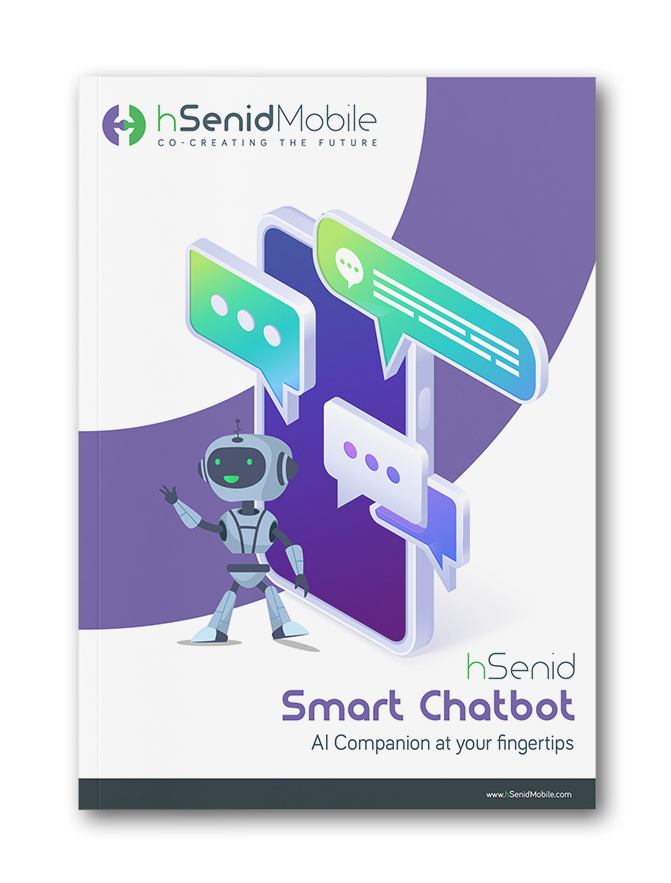Conversational AI platforms are gaining a lot of traction these days, particularly in the service sector. Several steps up from traditional chatbots, conversational chatbots do more than offer simple, pre-programmed responses to user questions. Through a combination of natural language processing (NLP) and machine learning (ML), they are able to engage in human-like conversations.
Human conversations are layered and complex. Language is the foundation of conversation, with connotation, denotation, idioms, colloquialisms and other such modes of expression providing nuance. AI-driven conversational platforms have the capacity to understand all these different shades of meaning. However, quite apart from vocabulary and other forms of expression, there is another factor that colors meaning: emotion. In order to achieve a complete and in-depth grasp of human utterances, it is pivotal to understand the emotion behind statements. This is where emotional intelligence comes in. A conversational chatbot must incorporate emotional intelligence so as to provide a fuller human-like communication experience.
What is emotional intelligence in conversational AI platforms?
The term emotional intelligence was first coined in 1990 by Peter Salvoy and John Mayer, who defined the concept as, “a type of social intelligence that involves the ability to monitor one’s own and others’ emotions, to discriminate among them, and to use this information to guide one’s thinking and actions.” The reference in terms of AI-driven chatbots is more or less the same. Emotional AI involves being able to recognize, understand and respond to human emotions. In fact, these are the three basic steps of emotional AI.- Recognizing emotion: NLP analyzes the words, tone and sentence structure of user communications in order to pick up on emotional cues. Voice-activated chatbots can also make use of pitch, pace and volume to identify emotion.
- Understanding emotion: Through sentiment analysis, the chatbot is able to classify if the communication is positive or negative and assess the emotional tone by factoring in context and intent. Analyzing conversational history and identifying patterns in past interactions helps hone this emotional evaluation.
- Responding to emotion: Once the chatbot has grasped the emotional undertones of a message it is able to produce an appropriate response. The chatbot can craft utterances that reflect sensitivity to the user’s emotional state. It also has the capacity to produce messages that mirror a user’s emotions in order to offer validation and support.
Why should a chatbot have emotional intelligence?
Gone are the days when a sound product was enough to convince a customer to channel their spending towards a specific business. Not only do customers have umpteen options to choose from, they have also learnt to choose in a more discerning manner. What customers look for now goes well beyond a product that matches their requirement. They want quality service and a sense of connection with the business that they are engaging in.When it comes to doing business, customers value emotional connection way above many other factors. Over 80% of customers have affirmed that they will be more likely to come back to an establishment if they felt there was a positive emotional connection with a customer service agent. That means that, for over three quarters of people with purchasing power, repeat business is primarily dependent on a strong emotional connection.
A positive customer service experience would lead 66% of customers to stay loyal to an establishment. Purchase patterns have revealed that these loyal customers spend 67% more than new customers. They are also highly likely to recommend a place to others, thus bringing in new business to the organization.
On the flip side, if customers have a negative experience with a company, an average of 40% of customers say that they would never visit that establishment again, with around 37% of customers confirming that they would seek out competing businesses. Then there is also the danger of negative reviews, with over 25% of customers claiming they take to the internet to write about their experience of poor customer service and warn others against patronizing that place.
In a context of increasing automation, chatbots are becoming the primary source of customer service. With customers keenly focused on receiving high-quality service, these chatbots must be geared to meet these demands. Emotional intelligence is what enables a chatbot to build the kind of rapport that modern customers seek.
What will a business gain from chatbots with emotional intelligence?
In light of what has been discussed regarding customer experience, the answer to this becomes self-evident. A chatbot that can connect with a user will automatically form an affinity with that user. By being empathetic, the chatbot becomes more astute at identifying a customer’s needs and so is able to respond in the most suitable manner. This enhances customer satisfaction and it is already clear what that does to the bottom line.The lack of emotional intelligence often causes chatbots to misconstrue customer communications. This leads to frustration, which can in turn have some harsh ramifications for an establishment. An emotionally intuitive chatbot preempts such misunderstandings, significantly reducing the chances of a negative customer experience.
Chatbots with emotional intelligence make a customer feel at ease because the interactions can be astoundingly human-like. Customers do not need to change the way they communicate just because they are dealing with a device or machine. The naturalness of the communication has started to convert even the strongest of skeptics, because they can engage with the chatbot on their terms.








